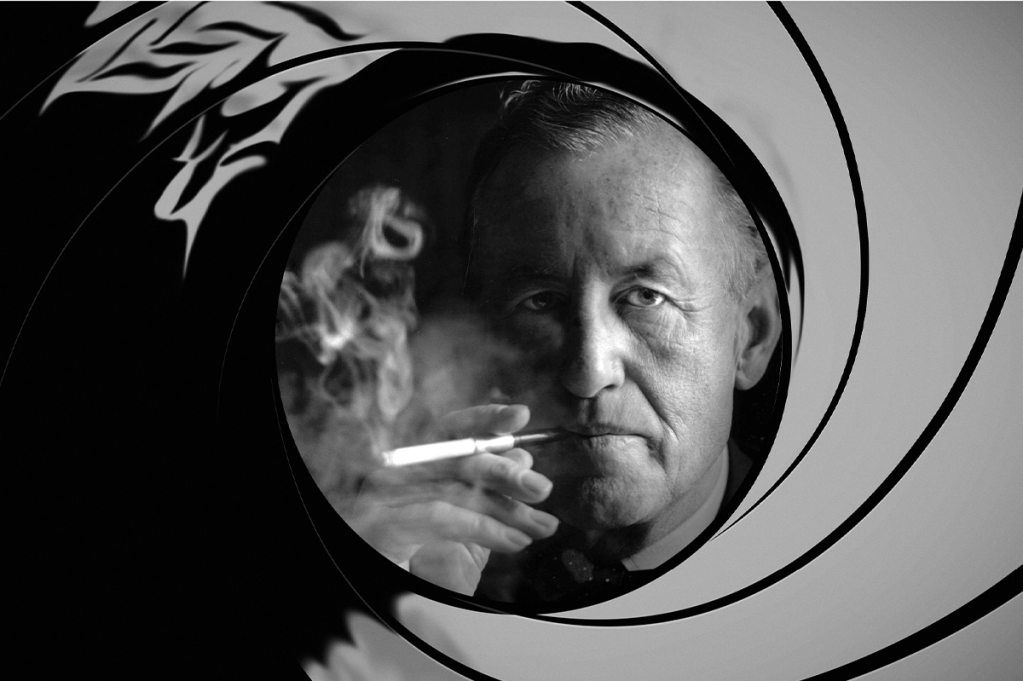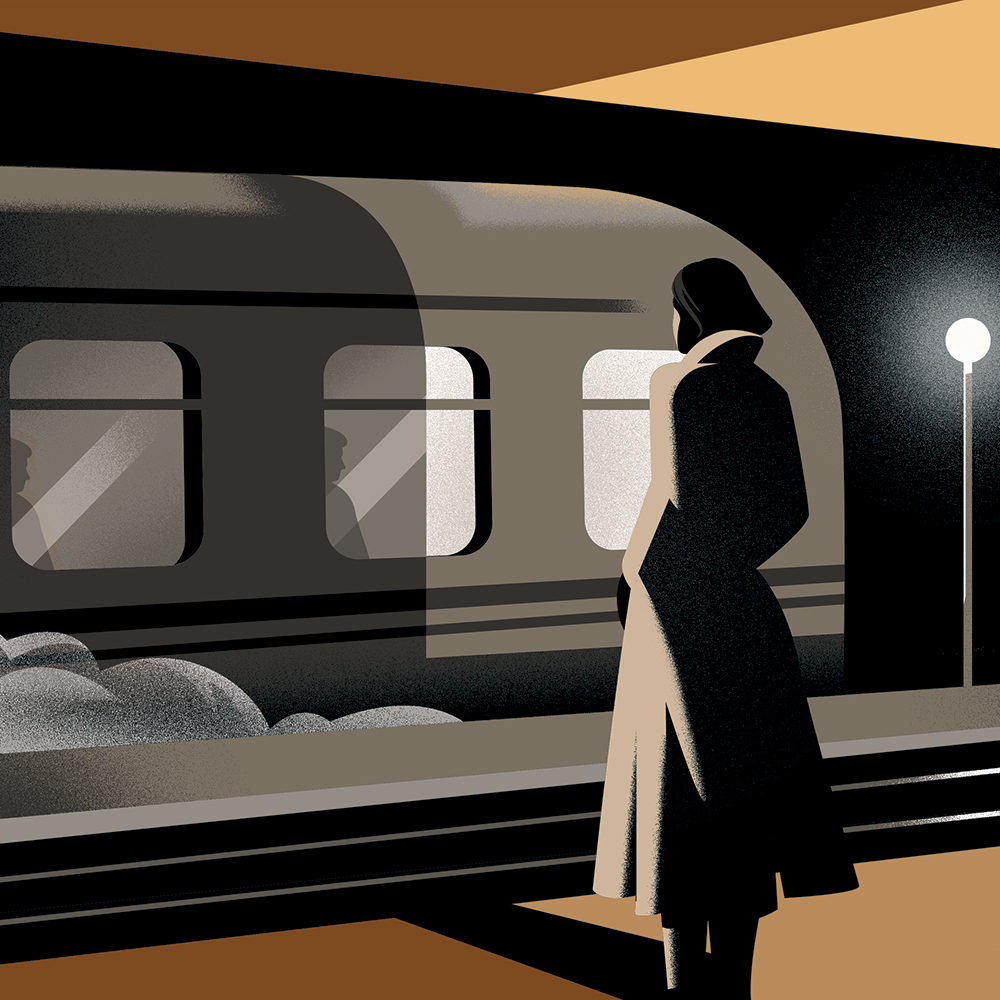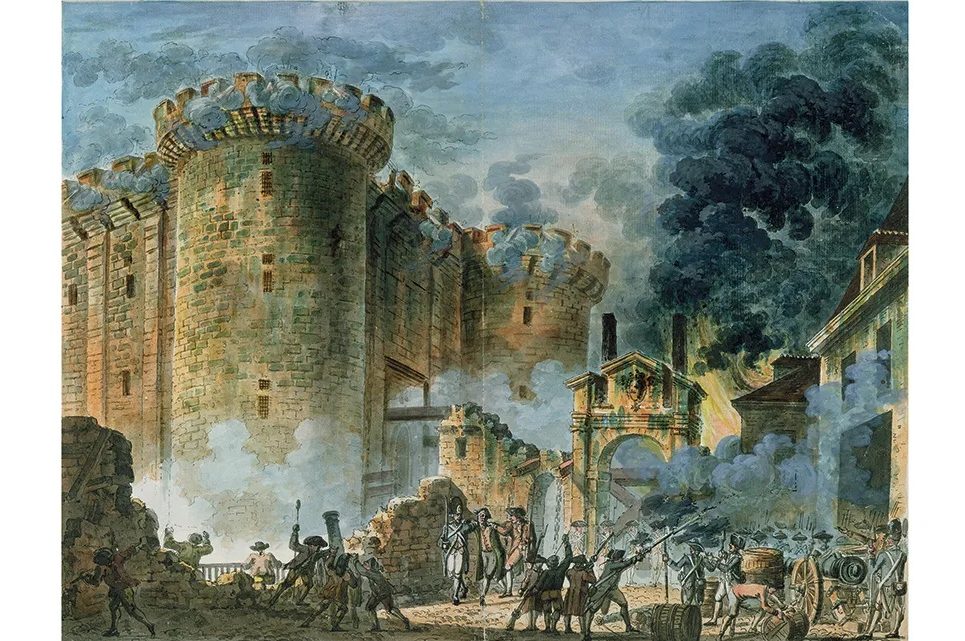It is sobering to think that if Ann Rothermere had been a less enthusiastic painter, James Bond might never have existed.
In January 1952, Lady Rothermere and Bond’s creator Ian Fleming were on holiday at Goldeneye, his house in Jamaica. Tension crackled in the air. He and Ann had been lovers since 1939. Her husband, Viscount Rothermere, chairman of Associated Newspapers, had recently divorced her. The news had reached the gossip pages of the London Daily Express. The scandalous couple had discussed marriage — with some urgency because Ann was pregnant — but Fleming’s expectations of marital bliss were slim. “I can promise you nothing,” he told her. “I have not an admirable character. I have no money. I have no title. Marriage will be entirely what you can make it.” And now the day of the wedding — March 24 — approached like a tropical storm cloud.
Fleming worried about his age (forty-three) and the chest pains that would lead to a heart attack in 1961. He weighed the prospect of abandoning his life of raffish promiscuity against the sober joys of fidelity. And he noted how restless he felt when Ann spent the mornings painting flowers.
For a man who’d been a key figure in wartime strategy — Commander Fleming, inventor of plans to outwit the Nazis; a restless traveler, a prodigious womanizer and bon vivant — he now cut a sorry figure: becalmed, spiritless, unwell. The man of action was stuck in a garden with a once-widowed, once-divorced socialite in her large straw hat, rather like a tropical avatar of Buzz Lightyear, the spaceman hero of Toy Story, when he’s no longer Andy’s favorite toy and finds himself at a doll’s tea party, wearing a flowery hat and re-named “Mrs. Nesbit.”
“My painting bored Ian,” Ann later recalled. “He said he had no intention of sitting out in the sun watching me at my easel, and I suggested he should write something just to amuse himself.”
The Bond saga started on the morning of February 17. After breakfast, Fleming closed the living-room door and wooden shutters, sat at his roll-top desk, uncovered his old Imperial typewriter, squared the ream of folio typing paper he’d bought on Madison Avenue, and started to write.
Every day for seven weeks, from 9 a.m. to noon, the tacketa-tacketa of the typewriter resounded through the beach house like gunfire. He made no outline of a plot or cast of characters (he took his hero’s name from the author of a book his eye fell on, A Field Guide to Birds of the West Indies) but typed on like a man under orders to create. At noon, he’d sunbathe, eat lunch, sleep and, at 5 p.m., read what he’d written before placing it in a blue folder. At 6:30, it would be time for cocktails.
When the routine ended on March 18, he’d written 62,000 words and invented a new kind of thriller: coldly, humorlessly narrated, speedily efficient, machine-tooled in its treatment of action, violence and sex, and with a central role for someone he firmly believed himself to be.
Casino Royale introduced the world’s readers to exotic phenomena that would become as familiar as their families. To Bond himself, tall, dark-haired, laconic, habitually treating his body, and his brain, as machines to be kept in top condition; to Bond’s special brand of cigarettes, “a Balkan and Turkish mixture made for him by Morlands of Grosvenor Street,” to his apartment in Chelsea and his car, a four-and-a-half-liter 1933 Bentley coupé “with the supercharger by Amherst Villiers.” And to the first Bond girl, Vesper Lynd, described by the callow Frenchman Mathis as having “black hair, blue eyes and splendid… er… protuberances.”
Readers also had their first sighting of M’s secretary, charmlessly described thus: “Miss Moneypenny would have been desirable but for eyes which were cool and direct and quizzical” (poor girl!). They could gaze in horror at the first Bond villain, Le Chiffre, a mystery man who wears his hair villainously en brosse, a sadist, flagellant and Russian agent, and embezzler of union funds that he seeks to recoup at the Royale casino. And they met Bond’s gruff, omniscient boss M, head of the British Secret Service, after he’d been told of the plan to “ridicule and destroy” Le Chiffre at the casino by making him lose 50 million francs.
M says the plan is “crazy but worth trying.” And even as thriller plots go, it is preposterous — giving James Bond 25 million francs to play Le Chiffre at baccarat, a card game whose course and conclusion is decided by luck rather than strategy or skill. When (spoiler alert) Bond is dealt two queens, which amount to zero, the reader feels Bond’s pain. When he’s dealt a third card — the winning nine — the reader mentally punches the air with glee. But neither event involves human agency: the gamblers merely look on, while Fate determines which cards come their way.
The germ of Casino Royale had come in 1941, when Fleming was in Lisbon with the man on whom M was based, Admiral John Godfrey. They dined at the Estoril Hotel and checked out the casino. It wasn’t a glamorous spectacle — just a handful of Portuguese punters and bored croupiers — but in Fleming’s imagination the gamblers were powerful and dangerous adversaries. He whispered to Godfrey, “Just suppose those fellows were German agents — what a coup it would be if we cleaned them out entirely!” He played at the tables that night until he lost all his money, but the scene grew in his imagination for eleven years, until the idea of striking a blow at the Nazis by winning stacks of their money gave him a plot.
He’d first talked about writing a thriller three years earlier when courting Mary Pakenham, an Evening Standard journalist. At his apartment, when not showing her his collection of French pornography, he talked her through his plot and his invention of the perfect villain — “a fat spider-like creature sitting in an armchair sniffing Benzedrine.” Fleming himself indulged in the stuff, and when, in Casino Royale, we see the obese villain at the card table, he’s just “inserted the nozzle of the cylinder, with an obscene deliberation, twice into each black nostril in turn, and luxuriously inhaled the Benzedrine vapor.”
The most vivid inspiration for the Bond stories, however, was Fleming’s experience during the war. After failing at careers in banking and stockbroking, he was recruited by the Navy as personal assistant to Admiral Godfrey, where he shone. He became liaison officer between the Secret Intelligence Service and the Special Operations Executive, devising schemes for deceiving the enemy: the story behind the recent film Operation Mincemeat, in which a corpse was dropped on the French coast, with documents in its clothing that led the Germans to believe the Allies would not be invading Italy from North Africa, was originally his idea. While not a field agent, he was the brains behind the action. And Fleming’s love of ingenious plots emerged in his fiction alongside his love for the formal memoranda sent by intelligence bosses to their agents.
Casino Royale was published by Jonathan Cape seventy years ago on April 13, 1953, to mostly glowing reviews. In the Times Cyril Ray wrote, “If Mr. Fleming’s next story has half the swiftness of this, as astringent an accent, and a shade more probability, we can be certain that he is the best new thriller-writer since [Eric] Ambler.” Maurice Richardson in the Observer urged readers, “Don’t miss this. A sort of Peter Cheyney de luxe, with everything of the very best and most expensive.” The Daily Telegraph signed up the bard of parochial Englishness, John Betjeman, to assess it; he concluded “Ian Fleming has discovered the secret of narrative art, which is to work up to a climax unrevealed at the end of each chapter.” Not everyone was happy: the novelist Simon Raven, something of a connoisseur when it came to writing about physicality and corruption, complained in the Listener about the “clumsy ending and also the torture scene” [in which Le Chiffre flays Bond’s naked testicles with a rattan carpet-beater] “which is really too monstrous to be excused even by its ingenuity.”
By the end of May 1953, the first edition of 4,750 copies had sold out. By midsummer, the publishers could boast that “since April 13, a copy of Casino Royale by Ian Fleming has been sold every six and a half minutes that the bookshops were open.” He was launched on the high seas of British culture. James Bond’s adventures would continue through thirteen more books, ending with Fleming’s untimely death in 1964 and the posthumous publications of The Man with the Golden Gun in 1965 and Octopussy in 1966.
The books have sold more than 100 million copies worldwide and have spawned a score of “continuation novels” by diverse hands. We’ve come a long way from the day when Ian Fleming sat in his Caribbean garden — brooding, emasculated, Buzz Lightyear-as-Mrs. Nesbit — and decided to fictionalize his life, and to take his alter ego, Commander Bond, to immortality and beyond.
This article was originally published in The Spectator’s April 2023 World edition.

























